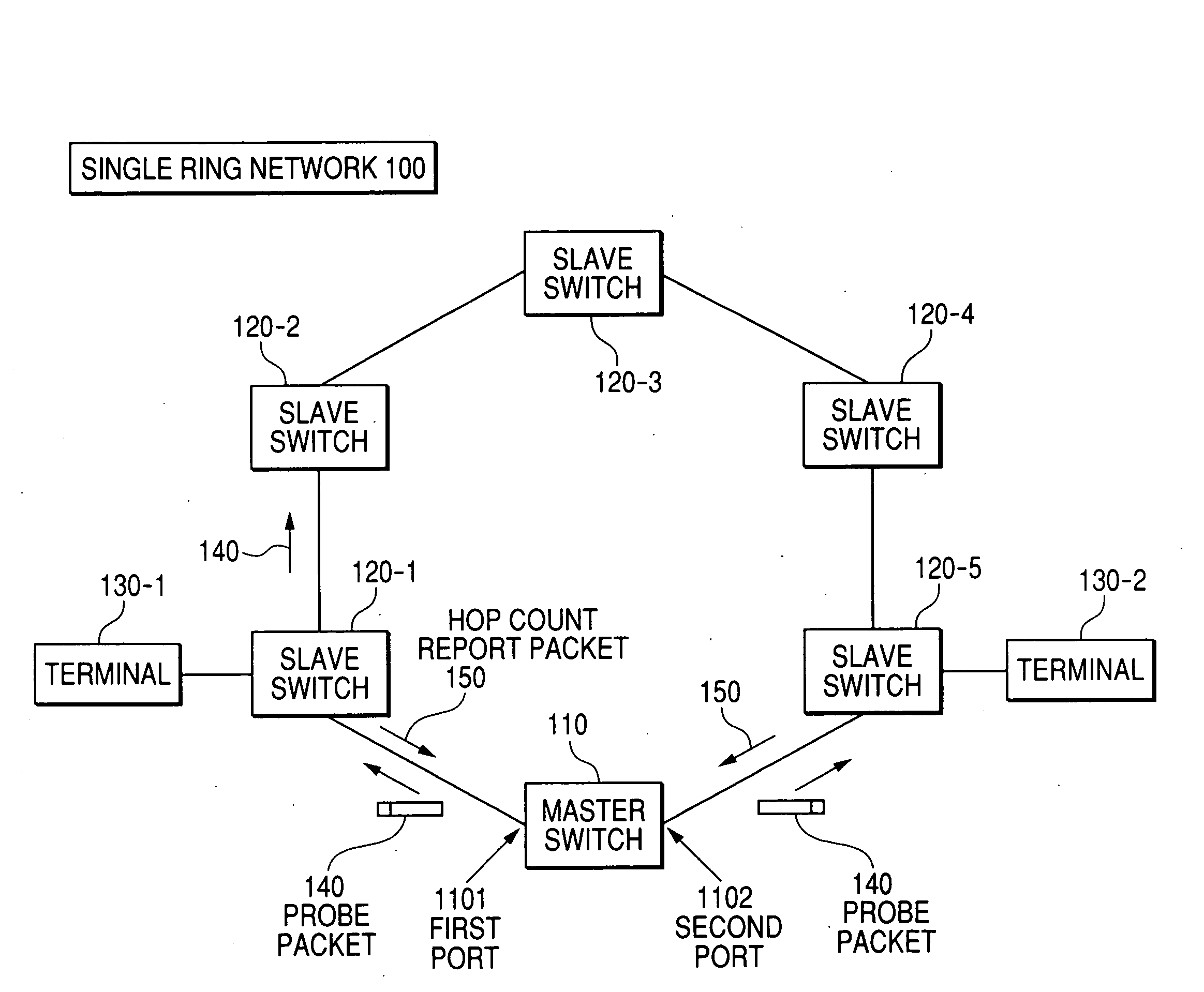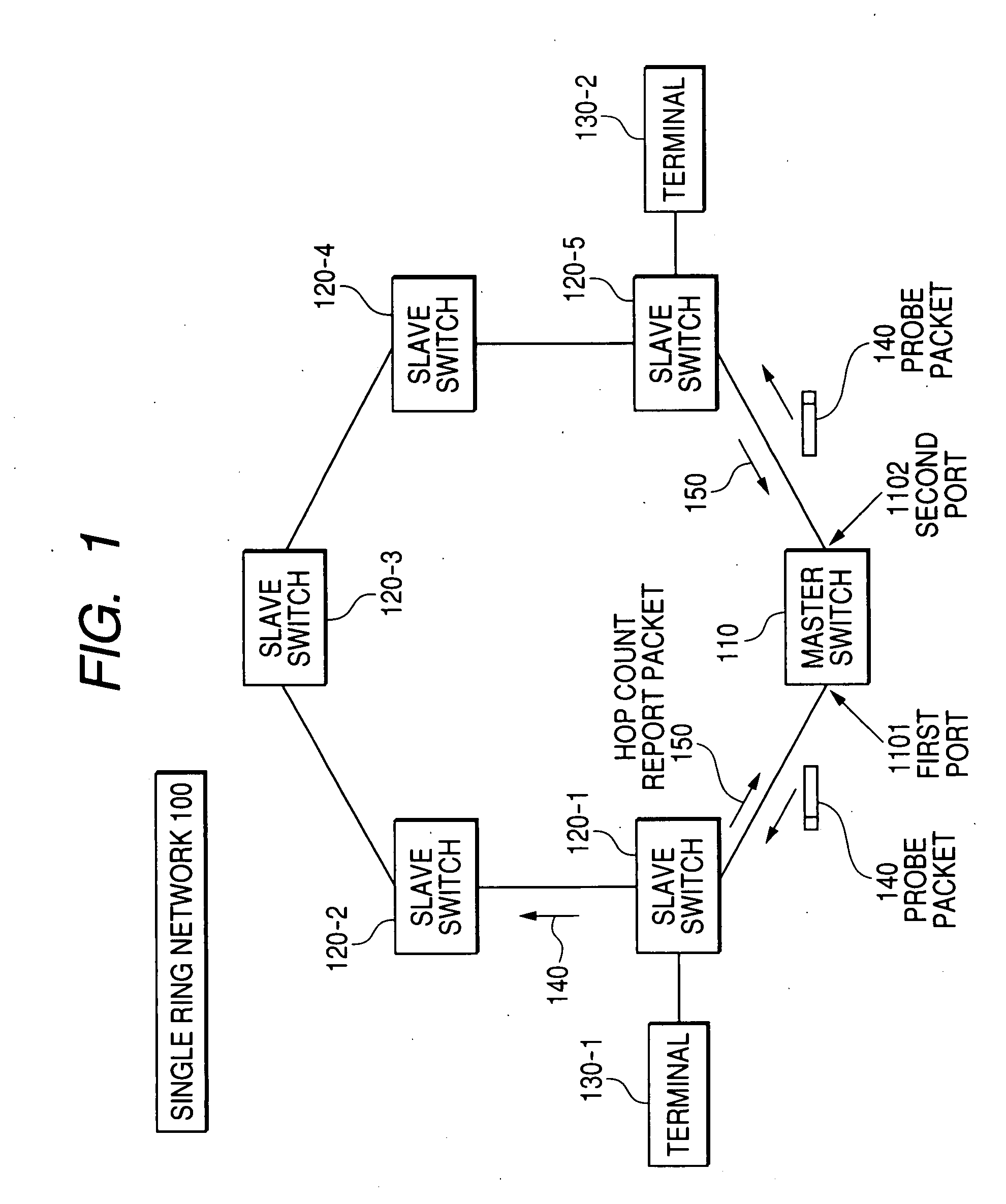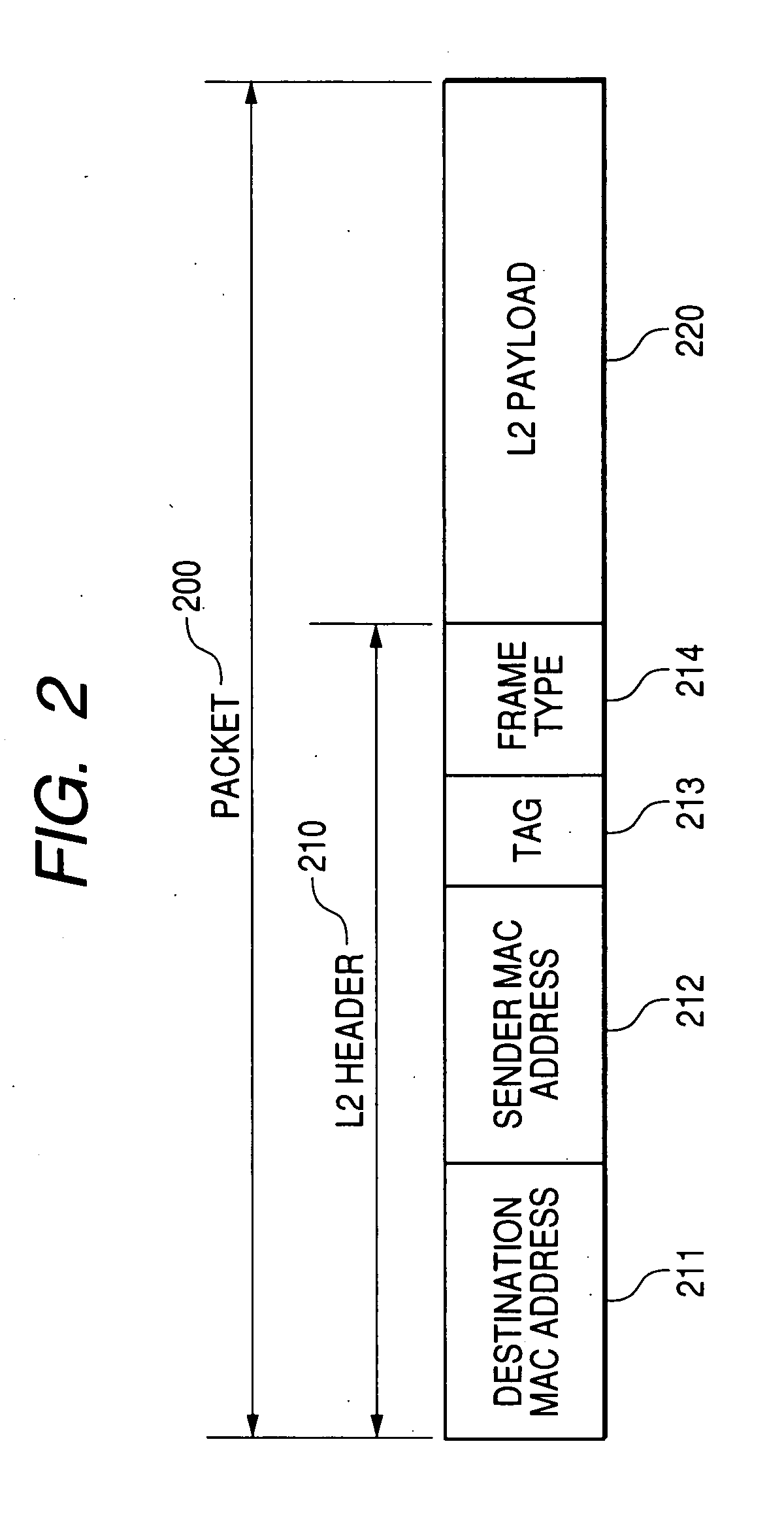Ring network and master node
a ring network and master node technology, applied in the field of ring network and master node, can solve the problems of deteriorating network reliability, affecting the reliability of data transmission, and not divulging the handling of multiple faults on the ring, so as to improve the reliability of the communication network
- Summary
- Abstract
- Description
- Claims
- Application Information
AI Technical Summary
Benefits of technology
Problems solved by technology
Method used
Image
Examples
first embodiment
[0035]Referring to the drawings, this embodiment will be described below. In this embodiment, a single ring network will be described. However, applied devices and types of packets are not limited.
(Hardware Configuration)
[0036]FIG. 1 shows an example of the configuration of the ring network.
[0037]The single ring network 100 is provided with a master node (a master switch) 110 that checks a condition of a ring and updates a database for transfer including data packets and slave nodes (slave switches) 120-1 to 120-5 that obey a directive from the master node 110. Terminals 130-1, 1302 are connected to each switch for example.
[0038]The master node 110 counts the number of slave nodes that can communicate with the master node 110 to detect the occurrence of multiple faults on the ring and recovery from multiple faults when no fault occurs in itself. The master node 110 transmits a probe packet 140 from a first port 1101 and a second port 1102 to count the number of communicable slave no...
second embodiment
[0106]FIG. 14 shows the configuration of a ring network equivalent to a second embodiment.
[0107]In the second embodiment, a case that a fault occurs in the master node 110 shown in FIG. 1 or a case that a probe packet 140 from the master node 110 cannot be received because of multiple faults will be described. The configuration of the network is the same as that in the first embodiment. However, in this embodiment, one of slave nodes 120 is defined as a sub-master node 120-6.
[0108]The sub-master node 120-6 transfers its own condition into “master” when a fault occurs in the master node 110 and plays the similar role to the master node 110. The sub-master node 120-6 in a condition of “master” is restored to the original condition (a condition of “sub-master”) when the proper master node 110 recovers from the fault. When no fault occurs in the master node 110, the sub-master node 120-6 executes the same operation as other slave nodes.
[0109]FIG. 6 is a flowchart showing the operation o...
third embodiment
[0118]In a third embodiment, operation for coping with the recovery of multiple faults of a master node 110 on a ring including the sub-master node 120-6 in the second embodiment will be described. However, in this embodiment, only the difference from the first embodiment and the second embodiment will be described. The configuration of a network is similar to that in the second embodiment.
[0119]FIG. 13 shows the configuration of a ring network 100 where multiple faults occur. FIG. 8 is a flowchart showing the operation by the master node 110 for coping with the faults on the ring including the sub-master node 120-6. The same reference numeral is allocated to the similar step to the above-mentioned step and its detailed description is omitted.
[0120]Referring to FIG. 13, the operation of the master node 110 when the faults recover will be described below. In an example shown in FIG. 13, multiple faults occur between slave nodes 120-1 and 120-2 (a fault A) and between slave nodes 120-...
PUM
 Login to View More
Login to View More Abstract
Description
Claims
Application Information
 Login to View More
Login to View More - R&D
- Intellectual Property
- Life Sciences
- Materials
- Tech Scout
- Unparalleled Data Quality
- Higher Quality Content
- 60% Fewer Hallucinations
Browse by: Latest US Patents, China's latest patents, Technical Efficacy Thesaurus, Application Domain, Technology Topic, Popular Technical Reports.
© 2025 PatSnap. All rights reserved.Legal|Privacy policy|Modern Slavery Act Transparency Statement|Sitemap|About US| Contact US: help@patsnap.com



